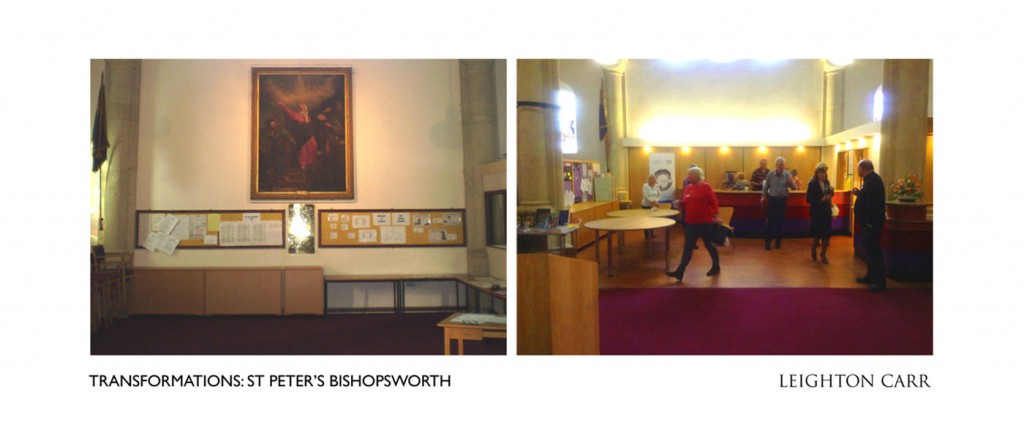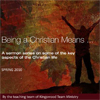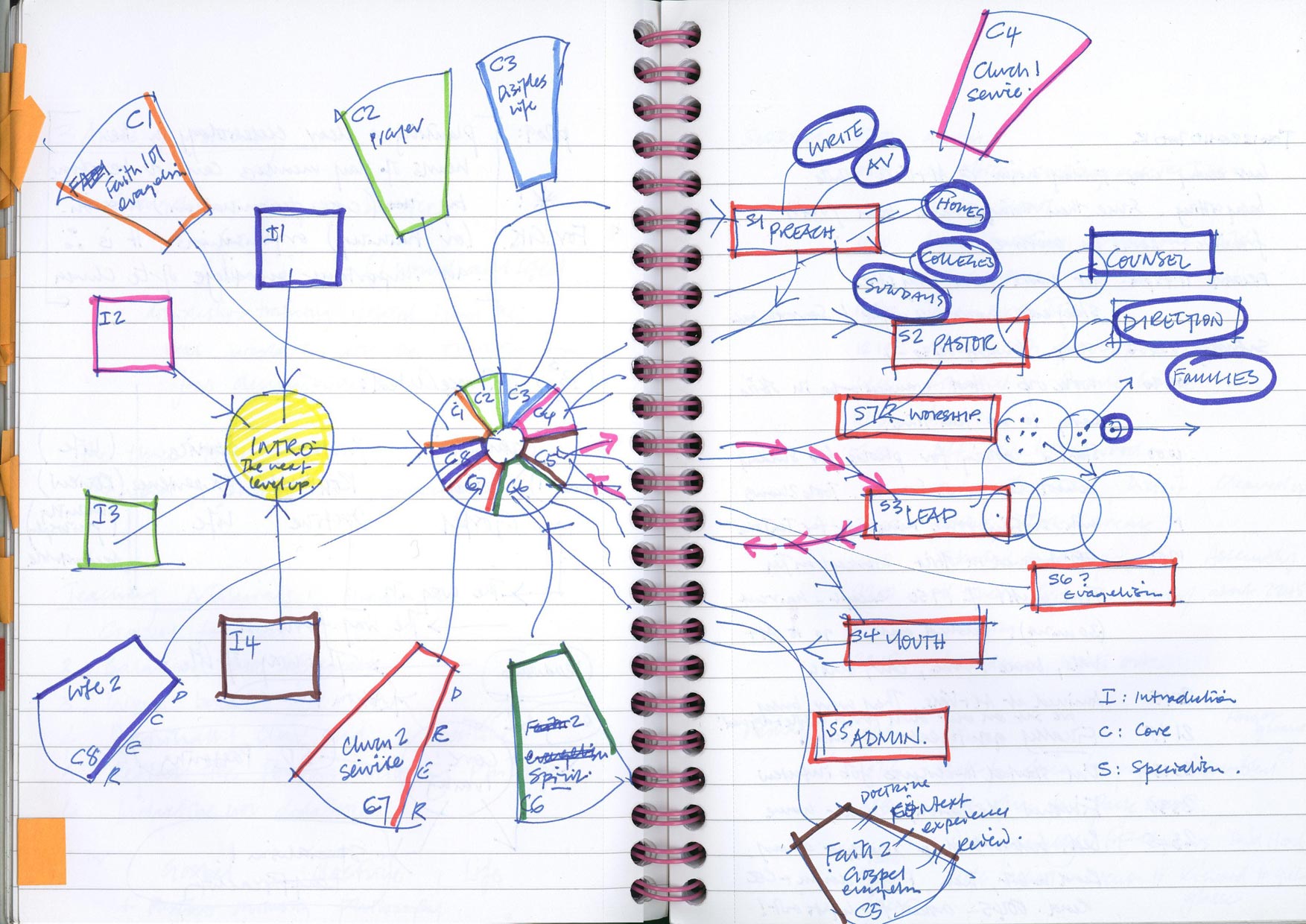Month: March 2013
Darkness
Simple connections can be thought provoking and prayer directing.
\nIf we notice them.
\nLike this connection yesterday.
\n
In the morning, using everyday morning prayers, the set reading was the Song of Zechariah
\n
“In the tender compassion of our God
\n the dawn from on high shall break upon us,
\n
To shine on those who dwell in darkness and the shadow of death
\n and to guide our feet into the way of peace.”
\n
That made me think for a long time about the nature of the darkness the world is engulfed in. Surely, I thought, those that dismiss the idea of sin can’t have another satisfactory explanation for the darkness that covers so many lives, who DWELL in darkness.
\n
In the evening, searching for some suitable hymn for an event, I read the lyrics of the hymn “O Church Arise” by Stuart Townend and Keith Getty which has the snippet:
\n
O church arise …..
\n
… An army bold
\nWhose battle cry is love
\nReaching out to those in darkness
\n
(http://www.worshiptogether.com/)
\n
So, the tender compassion of our God breaks in upon us, and we, the church reach out.
\nThese are linked.
\nGod shines through us reaching out. Or, as we shine in the world God reaches out.
\n
Either way, the connection was small – one word, darkness – but enough to make me pause twice and pray.
\n
The first step, of course, is to notice.
\n
G.L.A.D. – A church near you?
At a conference I attended recently one of the speakers – going ‘off piste’ from his subject of The Environment – started musing openly about various facets of church life, increasing in confusion until he finished with ‘…but what is church anyway?’.
\n
“For goodness sake, is it really that complicated?” I thought, as I do so often nowadays when people pontificate in confusion on this subject.
\n
Anyway, I have my own mnemonic for the simple definition of an effective church, which is G.L.A.D. – being
\n
\n
G – gathered in worship, praise and prayer
\n
L – learning together from experience and scripture
\n
A – active in witness and service inside and outside the church
\n
D – distinctive as a community – living well in difficult times.
\n
\n
So, how do you become an effective church leader?
\n
Keep it simple and focus on these few key essentials of an effective church.
\n
(… closely related to ‘The Big Four of Discipleship’)
\n
A Portfolio of Posts and Publications
Discipleship Strategy
A Closer Look at Internet Addiction
One of the sites I follow on my Twitter account is Urban Times. Being an avid city lover I was attracted to the site by its urban focus, but they often have interesting pieces like this one on Internet Addiction. It’s worth checking out for everyone, but especially if you have young children, or if you are already an Internet Addict!!\r\n\r\nA Closer Look at Internet Addiction.
Problems with Pioneers – Revex v Capex Funding
Where does the money for organisational growth come from?\r\n\r\nIn business, the first place to look for new project funding is usually from revenue; can growth be funded out of revenue expenditure – or revex?\r\n\r\nBut increasing revex without increasing income reduces profit, and depending on the speed of return from the new investment this lower bottom line can cause problems in cash flow, confidence and shareholder patience.\r\n\r\nSo can new project funding be justified out of capital expenditure – or capex?\r\n\r\nIt depends. While capex is limited usually to acquiring or improving physical assets, it may be sometimes possible to use capex to start a new business to grow the company.\r\n\r\nBut again the bottom line is – the bottom line: in broad terms any capex investment reduces reserves and unless it can be proven that the investment is either acquiring a genuine asset or creating an opportunity for a certain return, why risk it?\r\n\r\nSo if growth can’t be funded from revenues, asset management or cash reserves, that leaves outside investment from increasing shareholder cash, or increasing debt by borrowing. Again, the simple question has to be asked: why would anyone want to do it? Is it realistic? A good rule is: if it’s such a good idea – borrow from the bank. If that’s a problem, then there’s a bigger problem with the idea.\r\n\r\nNow think about a local church wanting to start a pioneer ministry. How can they pay for it?\r\n\r\nWhat about revex? The reality is that most churches are on the breadline, and don’t have surplus money from income to invest.\r\n\r\nWhat about capex? Again, not realistic as most local churches have no strong cash reserves, and even churches with assets find it difficult to reorganise long term assets to release extra funds in the amounts needed to support a pioneer ministry.\r\n\r\nWhat about Head Office investment – in the Church of England this would be the diocese. Would they invest? Well, how would they? Why would they? With voluntary income generally reducing, value of investments declining, and increases in costs only being mitigated by reducing clergy numbers, what compelling argument can be made to fund some new venture with (usually) untried pioneers?\r\n\r\nWhich leaves ‘shareholder’ investment – raising funds from organisations or individuals either inside or outside the church. And that raises rather complicated questions of ownership – who’s buying what and who eventually owns what?\r\n\r\nSo. Want to be a pioneer? Then more likely than not you’ll have to find your own support.\r\n\r\nThe Apostle Paul understood 2,000 years ago that it’s better this way.
Numbers that Count
A well known British company – in one year:\r\n\r\n· Revenue up 8.4 per cent to £10,827 million.\r\n· Operating profit before exceptional items £274 million.\r\n· Operating profit of £233 million.\r\n· Loss before tax from continuing operations £139 million.\r\n\r\nA little known Chinese evangelist – in one year:\r\n\r\n· Travelled 58,000 miles by train, bike, rickshaw and mule.\r\n· Preached to 400,000 people.\r\n· Of these 18,000 became Christians.\r\n· From these 827 preaching bands were established to evangelise China.\r\n\r\n I know which numbers I would want on my gravestone …
Living Cities – the need for Creative and Inspired Urban Theology
Living in cities can be challenging, exhausting and exhilarating all at the same time. Some of us love it. Many don’t.
\r\nHow can the church flourish (or even survive) in the modern city, when everyone has so little time and energy for anything but the day-to-day business of staying solvent and sane? In fact, one of the ironies of city churches is that while cities exist because they offer an efficient consolidation of resources, one of the features of many city or urban churches is that they are paired down to the minimum because resources are scarce. I know this having spent all my life in churches serving cities – either city centre, or inner city, or the urban poor.\r\n\r\nAnd yet, one of the hallmarks of the Kingdom of God is growth leading to fruitfulness. It is not scarcity leading to barrenness.\r\n\r\nWhat’s the problem?\r\n\r\nWell, there are lots of problems, but a significant one is that we do not invest enough time in understanding the nature of the urban context in which we witness and worship.\r\n\r\nIt is my firm belief based on years of observation that our praxis (how we act) is weak because our understanding of our context is poor and so our application of theology to our context is immature. I once wrote this:\r\n\r\n“… questions such as …\r\n
… what is this context … how is it formed … how does it form its people … what are its symbols and motifs, its myths and images, and how do they shape the community living amongst them?
\r\n
… help unravel our context. When informed by our theology they lead us to the key questions both the urban theologian and the local Christian want to answer:
\r\n
“where is God in this context, where does He want to be, and therefore, what should we do?”
\r\nThe praxis of urban life is the concern of the poor, the voiceless, the young, the old, of everyone from the makers of history to the inhabitants of shabby cityscapes. Every participant in an urban context is formed by it in some way … It becomes imperative that somewhere within the urban faith community there should be theologians fully engaged with context to interpret it in the light of their learning.\r\n\r\nSo I’m wondering, how many churches have employed theologians, and maybe anthropologists, historians, sociologists, to help them interpret their context?\r\n\r\nFor those that are interested in how this applies to an inner city context see Experiments in Praxis.\r\n\r\nor click on the icon …\r\n\r\n\r\n\r\n \r\n
Sowing and Reaping
Many of us experience times when we feel we are not sowing spiritual seeds for a future harvest.\r\n\r\nThis is not about times when we are resting, or when we have stepped out of our everyday routines to gain some perspective. During these times it’s right to hold back and find new energy and direction.\r\n\r\nInstead, this is about the times when we have energy, capacity, and capability … but no opportunity, usually to due to circumstances outside our control.\r\n\r\nLeaders in ministry often experience this, but the problem is not exclusive to leaders. In fact, leaders often have more opportunity and power to change and improve their own circumstances than most people.\r\n\r\nNo, this situation could apply to anyone of us.\r\n\r\nThe solution?\r\n\r\nThe best advice I’ve heard recently is from Pete Davies – church consultant and friend:\r\n
“When you can’t sow into your own field, then sow into someone else’s field\r\nand help them bear a harvest”
\r\n … and then you can do what Pete suggests:\r\n
“Don’t judge each day by the harvest you reap, but by the seeds you plant”
\r\n













